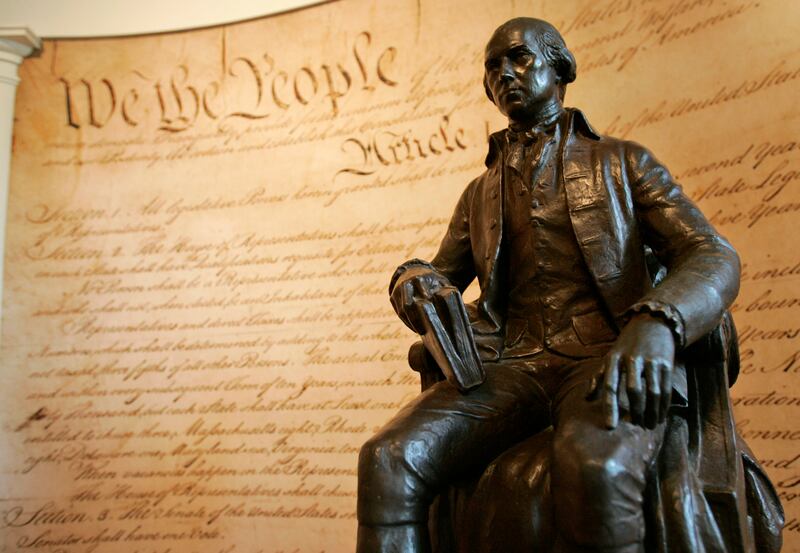Many of us can think of a teacher who has had a significant impact on our lives. They may have influenced our interests and perhaps our career, showed faith in our ability to succeed, or helped us look at the world in a new way. They at the very least engaged us in new understandings that have expanded our knowledge and enriched our lives.
That was Donald Robertson for James Madison. A student at the Robertson School, young James grew up to become the “Father of the Constitution” and later the fourth president of the United States. While public education was not available when the founders and framers were growing up in colonial America, the well-to-do could send their children to England, hire a tutor or send their children to one of the very few and prestigious secondary schools in colonial America.
The Robertson School was one such school. Over its 15-year existence, it was attended by children — some 200 male and a few female children of the Virginia Colony — many of whom would become prominent leaders during and after the American Revolution. “A man of extensive learning, and a distinguished Teacher,” as Madison called him, Robertson was an immigrant from Scotland and influenced by the Scottish Enlightenment, with its humanist and rational emphases and rejection of authority not based on reason.
Robertson’s students — including “Mr. Jamie,” as Robertson sometimes called Madison — were exposed to English grammar, composition and literature; French and Latin; physics, theology, chemistry and philosophy; and the classical histories of Greece, Rome and England, including authors such as Virgil, Cicero, Horace and Ovid. Historians believe Madison’s writing abilities — which are apparent in the Constitution and in Madison’s contributions to The Federalist Papers — were the result of his mentor‘s instruction. Near the end of his life, Madison looked back on his formative years under Donald Robertson’s tutelage and wrote, “All that I have been in life I owe largely to that man.”
In 2021, when the Civic Thought & Leadership Initiative (CTLI) at the Center for Constitutional Studies at UVU began expanding our professional training options to bring civic education to educators in Utah and beyond, we knew we needed master teachers like Donald Robertson to amplify our reach.
Thus the Robertson Fellowship was born with the purpose of providing excellent classroom content instruction and pedagogy to Utah’s K–12 educators. More than 10 master teachers from around the state now contribute their expertise to our efforts. For example, the CTLI recently put on a regional civics training at Utah State University, reaching nearly 100 teachers. With the participation of our Robertson Fellows, we were able to help both elementary and secondary teachers gain greater expertise in teaching the Constitution and promoting civic engagement. A similar training done at Southern Utah University reached even more — 130 teachers. These civics teachers will in turn teach about 5,000 students this year alone. When they bring ideas back to their colleagues, the influence of these teachers’ civic education will be even greater.
Lynda Boyle, an award-winning teacher at Monticello High School and one of the Robertson Fellows, spoke of the “real joy” she finds in working with teachers who “are driven to improve their craft and increase their content knowledge [and] gain a greater understanding of the Constitution.” These K– 12 teachers, she continued, “are on the front line of maintaining our republic.”
Donald Robertson could not have known that “Mr. Jamie” would one day be on the front lines of creating our republic. Likewise, the K–12 teachers of today cannot know all that their students will go on to accomplish. But we feel certain that the dedication of those teachers to increasing students’ civic knowledge, skills, dispositions and virtues will help them uphold our republic and bless our country for years to come.

